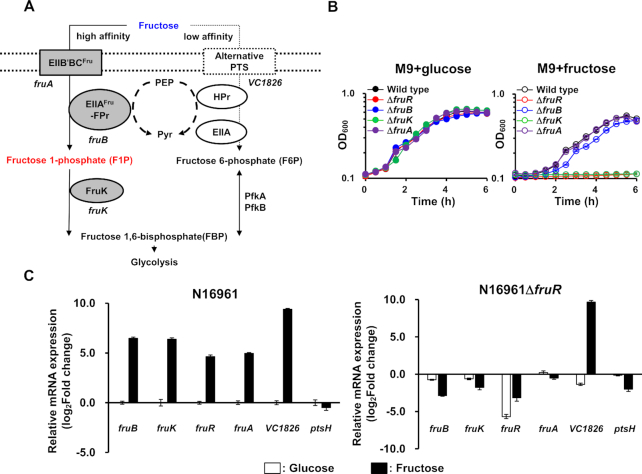Figure 1.
Vibrio cholerae FruR activates fru operon transcription in the presence of fructose. (A) The schematic representation of fructose metabolism in V. cholerae. Fructose is mainly transported through the fructose-specific PTS (PTSFru) which consists of FruB (FPr-IIAFru) and FruA (EIIB′BCFru), and concomitantly phosphorylated to fructose 1-phosphate (F1P), which is then channeled towards glycolysis following the activity of 1-phosphofructokinase (FruK) to yield fructose 1,6-bisphosphate (FBP). VC1826 was also shown to transport fructose (28). (B) Growth curves of in-frame deletion mutants of fruB, fruK, fruA, and fruR in M9 medium supplemented with 0.2% glucose (left panel) or fructose (right panel). Growth was measured by absorbance at 600 nm using a multimode microplate reader (TECAN). (C) The relative mRNA expression of fru operon genes, fruR, and VC1826 in the wild-type V. cholerae N16961 (left) and a fruR mutant (right) grown on fructose. The mRNA expression levels of indicated genes are shown as relative values (log2 scale) to that of the wild-type strain grown on glucose. The HPr-encoding gene (ptsH) was used as a negative control. The means and standard deviations of three independent measurements are shown in (B) and (C).

